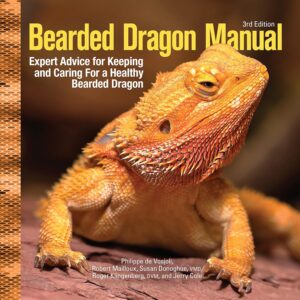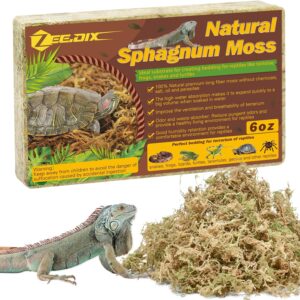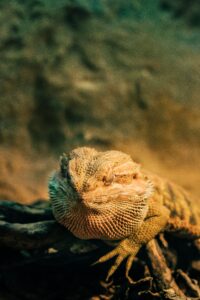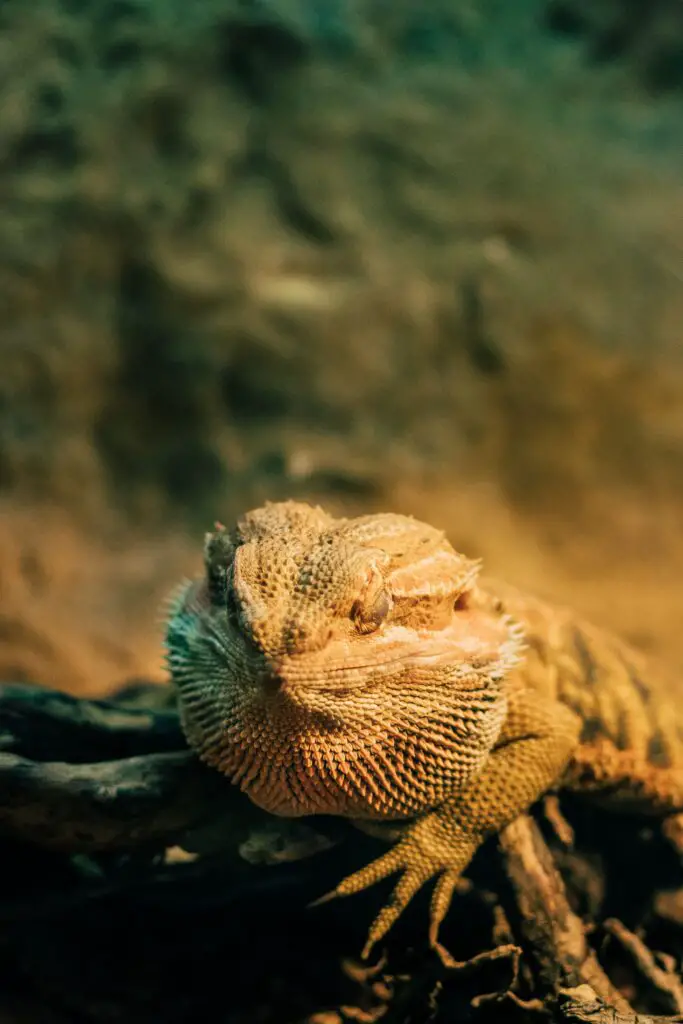Bearded dragon hide
Bearded dragon hide: It is quite fascinating how these scaly creatures, known as bearded dragons, have captured the hearts of reptile enthusiasts around the world. As captivating as their appearance may be, it is equally important to ensure their well-being in captivity.
One crucial aspect of caring for these majestic creatures is providing them with a suitable environment that mimics their natural habitat. In this article, we delve into the significance of a bearded dragon hide and its numerous benefits in promoting their overall health and happiness.
Definition of a Bearded Dragon Hide
A bearded dragon hide refers to an enclosed shelter or retreat within the reptile’s habitat that offers concealment and security. These hides can come in various forms, such as rock caves, log hides, or even custom-made structures using materials like PVC pipes or driftwood. Essentially, the hide serves as a safe haven where your bearded dragon can retreat and feel secure whenever it desires solitude or encounters stressful situations.
Importance and Benefits of Providing a Hide for Bearded Dragons
 The provision of hides for bearded dragons goes beyond mere cosmetic appeal; it plays a pivotal role in supporting their physical and psychological well-being. In their natural habitat, these remarkable reptiles seek out hiding spots like crevices among rocks or under fallen logs to escape potential threats and regulate their body temperature. By replicating such conditions within their captive environment, we offer them a sense of familiarity that helps minimize stress levels and promote overall contentment.
The provision of hides for bearded dragons goes beyond mere cosmetic appeal; it plays a pivotal role in supporting their physical and psychological well-being. In their natural habitat, these remarkable reptiles seek out hiding spots like crevices among rocks or under fallen logs to escape potential threats and regulate their body temperature. By replicating such conditions within their captive environment, we offer them a sense of familiarity that helps minimize stress levels and promote overall contentment.
One key benefit of providing hides is stress reduction. Bearded dragons are known to experience stress from various factors such as loud noises, excessive handling, or even changes in their surroundings.
When these stressors arise, having access to hiding spots allows them to retreat from potential triggers and find solace within the confines of their hideouts. Additionally, hides also facilitate proper thermoregulation.
Bearded dragons, being ectothermic creatures, rely on external heat sources to regulate their body temperature. By strategically placing hides near heat sources such as basking lamps or under heat emitters, we create temperature gradients within their enclosure.
This allows the dragons to move between warmer and cooler areas as needed, ensuring they can maintain their preferred body temperature and overall metabolic health. Understanding the significance of a bearded dragon hide is essential for anyone responsible for the care and welfare of these fascinating reptiles.
These shelters provide a sense of security and mimic natural hiding spots in the wild while offering an array of benefits that contribute to their overall well-being. In the following sections, we will explore different types of hides available for bearded dragons, factors to consider when choosing a hide, and best practices for placement within the enclosure.
Understanding Bearded Dragons
Brief overview of bearded dragons as pets
Bearded dragons, scientifically known as Pogona, are popular reptile pets cherished for their captivating appearance and docile nature. Originating from the arid regions of Australia, these fascinating creatures have gained immense popularity in recent years due to their unique characteristics and relatively low maintenance requirements.
Bearded dragons are diurnal reptiles, meaning they are active during the day and spend their nights resting or sleeping. With proper care, these reptiles can live up to 10-15 years in captivity.
One of the key reasons why bearded dragons make excellent pets is their temperament. Unlike some other reptiles, these lizards tend to exhibit a calm and friendly demeanor when handled gently and regularly from an early age.
They often develop a bond with their owners and can become quite interactive, enjoying human interaction and displaying individual personalities. Additionally, bearded dragons have become popular among both novice and experienced reptile enthusiasts due to their relatively low maintenance requirements compared to larger or more delicate species.
Natural habitat and behavior of bearded dragons in the wild
 In the wild, bearded dragons inhabit various arid regions of Australia such as deserts, woodlands, shrublands, or grasslands. Their natural habitat consists of an intricate mix of rocky outcrops, sandy patches, sparse vegetation, fallen logs, and burrows in which they seek shelter from predators or extreme temperatures.
In the wild, bearded dragons inhabit various arid regions of Australia such as deserts, woodlands, shrublands, or grasslands. Their natural habitat consists of an intricate mix of rocky outcrops, sandy patches, sparse vegetation, fallen logs, and burrows in which they seek shelter from predators or extreme temperatures.
These reptiles are highly adaptable and have evolved unique physiological features that enable them to survive harsh conditions. Bearded dragons display intriguing behavior patterns that reflect their adaptation to desert environments.
Basking is an essential part of their daily routine as they require a specific temperature range (around 95-105°F) for optimal digestion and overall well-being. They can often be seen perched on rocks or other elevated surfaces, extending their bodies to absorb heat from the sun.
Additionally, bearded dragons are known for their distinctive display called “bearding,” where they puff out their throat and darken the scales in response to various stimuli such as territorial disputes or courtship. Understanding the natural habitat and behavior of bearded dragons is crucial for providing them with appropriate care and creating a suitable captive environment that meets their needs.
As reptile enthusiasts, it is our responsibility to emulate aspects of their wild habitat and ensure they have access to essential resources such as proper lighting, heating, hiding spots, and a balanced diet in captivity. By doing so, we can ensure the health and well-being of these captivating reptiles while enjoying their wonderful presence as pets.
The Purpose of a Hide for Bearded Dragons
Creating a Safe and Secure Environment
Creating a safe and secure environment is one of the primary purposes of providing a hide for bearded dragons. In their natural habitat, these reptiles often seek shelter in various hiding spots to protect themselves from potential predators or harsh weather conditions. By mimicking this natural behavior in captivity, we can help them feel safe and secure, ultimately leading to better overall health and well-being.
A hide provides a secluded space where bearded dragons can retreat when they feel threatened or stressed. This sense of security allows them to relax and reduces the risk of stress-related health issues.
Additionally, providing hides can also prevent potential injuries caused by accidental falls or collisions with objects within the enclosure. By creating an environment that promotes safety and security, we can ensure our beloved bearded dragons thrive in captivity.
Mimicking Natural Hiding Spots in the Wild
Bearded dragons are native to arid regions of Australia, where they inhabit diverse landscapes such as deserts, woodlands, and grasslands. In these environments, they have access to various hiding spots like rock crevices, fallen logs, dense vegetation, or even underground burrows. These hiding spots serve multiple purposes for bearded dragons – protection from predators, regulating body temperature by seeking shade or warmth as needed, and resting undisturbed.
By providing hides that resemble these natural hiding spots within their enclosure, we recreate an element of their wild habitat. Rock caves or tunnels simulate the sheltered spaces between rocks where bearded dragons would often find refuge in nature.
Log hides mimic fallen branches or decaying logs that offer both cover and warmth beneath them. Artificial plants strategically placed as hiding spots replicate dense foliage found in their native habitats.
Reducing Stress and Anxiety in Captive Bearded Dragons
Bearded dragons, like many reptiles, are sensitive creatures that can experience stress and anxiety in captivity. Factors such as unfamiliar surroundings, loud noises, excessive handling, or inadequate hiding options can all contribute to their stress levels. This chronic stress can have detrimental effects on their physical and mental well-being.
Providing hides addresses the need for privacy and security that bearded dragons seek instinctively. Hides offer a sanctuary where they can retreat when they feel overwhelmed or anxious, helping them cope with the stresses of captive life.
By offering proper hiding options, we create a supportive environment that reduces stress levels in bearded dragons, allowing them to display natural behaviors and promoting overall mental and emotional wellness. Hides serve an essential purpose in the lives of captive bearded dragons.
They create a safe and secure environment by mimicking natural hiding spots found in their wild habitat while reducing stress and anxiety levels. By understanding these purposes and incorporating suitable hides into their enclosure setup, we can provide our beloved bearded dragons with the ideal conditions for a fulfilling life in captivity.
Types of Hides for Bearded Dragons
Commercially available hides
Commercially available hides are convenient options for providing shelter to your bearded dragon. These hides are specifically designed to replicate natural hiding spots found in the wild, ensuring a sense of security and comfort for your pet. One popular type of commercially available hide is the rock cave or tunnel.
These hides mimic the rugged terrain that bearded dragons naturally seek out, providing a cozy retreat where they can feel safe and hidden from view. The irregular shapes and texture of these rock caves or tunnels also offer opportunities for climbing and exploration.
Another common type of commercially available hide is the log hide. Designed to resemble fallen logs, these hiding spots create a naturalistic environment within your bearded dragon’s enclosure.
The hollowed-out interior provides a cozy space for them to retreat into, while the external texture allows for gripping and climbing opportunities. Log hides not only serve as shelters but also double as engaging enrichment items that stimulate your bearded dragon’s natural behaviors.
Artificial plants as hiding spots
Artificial plants can serve dual purposes in a bearded dragon’s enclosure by adding both aesthetic appeal and functional hiding spots. These plants are typically made from safe materials like silk or plastic, designed to resemble various species found in their native habitats. Your bearded dragon can utilize these artificial plants as secure hiding places by positioning themselves amidst the foliage, blending into their surroundings while ensuring privacy when needed.
When choosing artificial plants as hiding spots, consider selecting ones that have sturdy branches or leaves capable of supporting your pet’s weight without collapsing or posing any risk of injury. It’s important to regularly inspect these artificial plants for any signs of wear or damage, ensuring they remain safe and beneficial additions to your bearded dragon’s habitat.
DIY hides
For those seeking more creative options or looking to save some money, DIY hides can be a rewarding project. One popular method involves using PVC pipes or plastic containers. These materials are easy to find, inexpensive, and customizable to suit your bearded dragon’s needs.
By cutting openings into the PVC pipes or plastic containers, you can create hideouts that allow your pet to enter and exit comfortably. Ensure that any sharp edges are filed down or covered with non-toxic materials to prevent any accidental injuries.
Alternatively, crafting hides from natural materials like cork bark or driftwood provides an enriching experience for both you and your bearded dragon. These natural hides not only offer a more authentic and visually pleasing hiding spot but also provide texture for climbing and exploration.
Before using natural materials as hides, ensure they have been properly cleaned and sterilized to avoid introducing any harmful bacteria or parasites into the enclosure. By exploring these various types of hides for bearded dragons – commercially available options such as rock caves or tunnels, log hides, artificial plants as hiding spots, as well as engaging in DIY projects using PVC pipes or natural materials – you can create a diverse and stimulating habitat that meets the needs of your beloved reptilian companion while adding aesthetic appeal to their living space.
Factors to Consider when Choosing a Hide
Size and Space Requirements based on the Size of Your Bearded Dragon
 When selecting a hide for your bearded dragon, it’s crucial to consider its size and space requirements. As these reptiles grow, their need for adequate hiding spots increases.
When selecting a hide for your bearded dragon, it’s crucial to consider its size and space requirements. As these reptiles grow, their need for adequate hiding spots increases.
A hide that is too small or cramped may cause discomfort and stress for your bearded dragon. It’s essential to choose a hide that allows your pet to comfortably enter, turn around, and rest inside.
For juvenile bearded dragons, smaller hides with snug spaces are appropriate. They provide a sense of security during the early stages of growth.
However, as your beardie matures into adulthood, it will require larger hides that accommodate its expanding size without feeling constrained. Be mindful of the length and width measurements of the hide to ensure proper fitting.
Providing Multiple Hiding Options for Different Temperature Zones within the Enclosure
Creating distinct temperature zones within your bearded dragon’s enclosure is crucial for proper thermoregulation. Different hides can help achieve this by offering varying heat gradients throughout the habitat.
By providing multiple hiding options strategically placed across different temperature zones, your pet will have the freedom to choose their preferred resting spot based on their thermal needs. Incorporate hides near heat sources such as basking lamps or under-tank heaters to create warm retreats for optimal digestion and metabolism.
Simultaneously, additional hides positioned in cooler areas allow them to regulate body temperature by escaping excessive heat when necessary. Offering diverse hiding options caters to their natural instincts while promoting overall well-being.
Adapting Hide Sizes as Your Bearded Dragon Grows
Bearded dragons undergo substantial growth during their first year of life, which necessitates periodic adaptation of hide sizes. It is essential to monitor their growth rate closely and upgrade or replace hides accordingly.
A hide that once served as a cozy shelter may become too small and uncomfortable for a rapidly growing bearded dragon. Replacing hides promptly ensures your pet’s continued comfort and prevents any potential injuries that may occur from trying to squeeze into undersized hides.
Regularly assessing your bearded dragon’s size and adjusting hide sizes accordingly will help maintain their well-being throughout their development stages. Remember, providing proper-sized hides and adapting them as your bearded dragon grows not only promotes physical health but also supports their emotional well-being by creating a secure and comfortable environment within their enclosure.
Best Placement for Hides within the Enclosure
Strategic positioning to ensure privacy and comfort.
When it comes to placing hides within the enclosure of your bearded dragon, it is important to consider their need for privacy and comfort. Bearded dragons are naturally solitary creatures that require a sense of security in order to thrive. Therefore, it is crucial to strategically position their hides in areas where they can retreat and feel safe from potential stressors.
One effective placement strategy is to position hides against the walls of the enclosure. This helps create a more secure environment as the walls provide additional support and minimize potential disturbances from outside movements.
Additionally, placing hides in corners or against solid surfaces can enhance a sense of privacy for your bearded dragon, allowing them to feel protected from potential threats. Furthermore, you should also consider elevating some of the hides within the enclosure.
Bearded dragons are known to climb and bask on elevated surfaces in their natural habitats. By providing elevated hides or positioning them on platforms or branches, you offer your bearded dragon an opportunity to exhibit natural behaviors while enjoying a secluded space.

Creating temperature gradients by placing hides near heat sources.
Temperature regulation is vital for bearded dragons’ overall well-being. Placing hides near heat sources allows them to take advantage of temperature gradients and regulate their body temperature effectively.
In their natural habitats, bearded dragons have access to various thermal zones which they utilize depending on their needs. To replicate this in captivity, ensure that at least one hide is positioned near the basking area where heat lamps or spotlights provide direct warmth for basking purposes.
This allows your bearded dragon to easily move between the heated area and cooler parts of its habitat when necessary. Additionally, consider placing another hide closer to the cooler side of the enclosure.
This will enable your bearded dragon to retreat into a cooler, shaded space when it needs to lower its body temperature or simply seek refuge from excessive heat. By providing hides in both warm and cool zones, you give your bearded dragon the opportunity to thermoregulate effectively and create a healthier environment for its overall wellbeing.
Strategic placement of hides within the enclosure ensures that your bearded dragon enjoys privacy and comfort while having easy access to the desired temperature range. By positioning hides against solid surfaces and elevating them, you provide a sense of security and mimic their natural habitat.
Additionally, placing hides near heat sources allows for effective temperature regulation. These considerations contribute to the overall happiness and well-being of your bearded dragon in captivity.
Decorating Hides to Enhance Natural Appeal
Adding substrate, such as reptile carpet or coconut fiber, inside the hide
Creating a comfortable and natural environment within a bearded dragon’s hide is crucial for their well-being. One way to achieve this is by adding suitable substrates inside the hide.
Reptile carpet is a popular choice as it provides a soft and safe surface for your bearded dragon to rest on. Its tight weave prevents loose threads from becoming entangled around their limbs, ensuring their safety.
Additionally, reptile carpet allows for easy cleaning since it can be removed and washed when needed. Another substrate option that works well inside hides is coconut fiber.
This organic material not only enhances the aesthetics of the enclosure but also mimics the texture and feel of natural environments where bearded dragons thrive. Coconut fiber retains moisture while allowing proper drainage, creating an ideal microclimate that promotes healthy shedding and prevents dryness.
Incorporating live plants or artificial foliage to create a more naturalistic environment
To truly transform your bearded dragon’s hide into an immersive natural retreat, consider incorporating live plants or artificial foliage. Live plants offer several benefits beyond aesthetics. They add oxygen to the air while helping maintain humidity levels within the enclosure.
Ideal plant choices include safe varieties such as snake plants or pothos vines, which are non-toxic and low-maintenance. However, if you prefer the convenience of artificial foliage, there are numerous options available that closely resemble real plants in appearance and texture while requiring no upkeep.
Artificial plants can create a lush greenery backdrop within your bearded dragon’s hide without worrying about potential toxicity or maintenance difficulties associated with real vegetation. Remember to carefully select decorations that won’t pose any harm to your pet; avoid sharp edges or pieces that could potentially break off and cause injury if ingested accidentally.
To sum up bearded dragon hide
Decorating a bearded dragon’s hide is not merely about aesthetics; it plays a vital role in providing them with a safe, comfortable, and enriched environment. By adding suitable substrates like reptile carpet or coconut fiber, you enhance their hiding experience, ensuring a soft and secure surface for them to rest on.
Incorporating live plants or artificial foliage takes the hide to the next level by creating a naturalistic environment that mimics their native habitat while providing added benefits such as increased oxygen and humidity levels. By considering these details when decorating your bearded dragon’s hide, you will not only create an inviting space for your pet but also contribute to their overall well-being and contentment.
Remember to regularly assess the condition of the decorations and clean them accordingly to maintain hygiene within the enclosure. With careful attention to detail and thoughtful design choices, your bearded dragon will enjoy their hide as a sanctuary within their home.
Importance of Regular Cleaning and Maintenance
Proper cleaning and maintenance of bearded dragon hides are essential for maintaining a healthy and hygienic environment for your pet. Regular cleaning helps prevent the buildup of bacteria, fungi, parasites, and odors that can be detrimental to your bearded dragon’s health.
It also ensures that the hide remains a safe and inviting space for your pet to retreat to. To clean a hide, start by removing any visible waste or soiled substrate from inside the hide.
Use a reptile-safe disinfectant or a diluted solution of mild soap and warm water to thoroughly clean the hide’s surface. Pay close attention to crevices and hard-to-reach areas where bacteria can accumulate.
Rinse the hide well with clean water before allowing it to dry completely. In addition to regular cleaning, it is important to inspect the hide for any signs of wear and tear.
Hides made from natural materials such as cork bark or wood may deteriorate over time due to moisture or rough use by your bearded dragon. Replace damaged hides promptly to ensure they continue providing adequate shelter without posing any risks.
Bearded dragon hide
The provision of appropriate hides is crucial for the physical and psychological well-being of captive bearded dragons. By mimicking their natural habitat, hides offer them a sense of security, reduce stress levels, and promote healthy behavior patterns. Furthermore, maintaining cleanliness in these hiding spots not only prevents potential health issues but also helps create an optimal living environment for your scaly companion.
By investing time in understanding your bearded dragon’s needs, selecting suitable hides based on their size and preferences, regularly cleaning them, ensuring proper placement within the enclosure, as well as enhancing their aesthetics with natural décor elements – you are actively contributing towards promoting a comfortable life for your beloved reptile. So, embrace the art of creating the perfect hideaway for your bearded dragon and witness the joy it brings to their life!
Further Reading:
- Carolina Custom Cages Terrarium Review
- 8 Best Basking Rocks for Beardie: What Is the Best Choice?
- 10 Best Thermometers for Beardie: How to Choose the Best One?
- 5 Best Beardie Lighting Setups for Beardie Lovers
- 9 Best Heat Lamps for Beardie: Natural Habitat Provided


